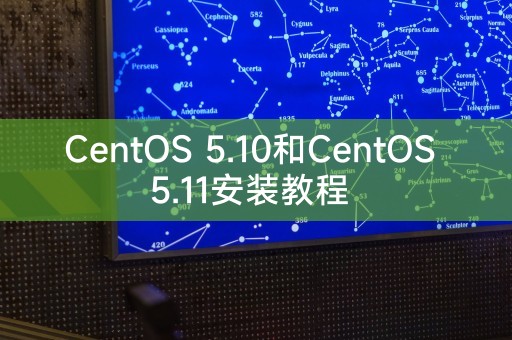Home >Computer Tutorials >Computer Knowledge >CentOS 5.10 and CentOS 5.11 installation tutorial
CentOS 5.10 and CentOS 5.11 installation tutorial
- 王林forward
- 2024-03-01 22:50:031018browse
CentOS 5.10 Installation Tutorial
CentOS 5.10 is one of the Linux distributions. It is built based on the Red Hat Enterprise Linux (RHEL) source code. It is an open source operating system. Before installing CentOS 5.10, you first need to prepare the installation CD or USB Startup disk, insert the installation media into the computer and start the system, choose to boot from the CD or USB.

In the installation interface, you can select the appropriate installation options according to the prompts. When making partition settings, you can choose automatic partitioning or manual partitioning. Automatic partitioning automatically allocates disk space for you, while manual partitioning requires you to manually specify the partition size and mount points as needed. Choose the appropriate partition setting method based on personal needs and disk capacity to ensure that the system can be installed smoothly and run normally.
Next, set the time zone, password and other information, and wait for the installation to be completed. After the installation is completed, restart the system and enter the user name and password to log in to the system.
CentOS 5.11 Installation Tutorial
CentOS 5.11 is the last version of the CentOS 5 series. Compared with CentOS 5.10, it contains more updates and fixes. The steps to install CentOS 5.11 are basically the same as installing CentOS 5.10.
You also need to prepare the installation media, insert it into the computer and start the system, select the installation option and follow the prompts, set the partition, time zone, password and other information, and wait for the installation to complete.
After the installation is complete, please restart the system and enter your username and password to log in. Then, perform system configuration and software installation according to personal needs to ensure that the system can fully meet your usage habits.
In order to ensure the stability and security of the system, it is recommended to regularly update CentOS 5.10 and CentOS 5.11 to obtain the latest security patches and feature updates.
Share with you:
Under Linux system, you can use the command line tool named "top" to monitor the running status of the system in real time, including CPU, memory, process and other information. You can exit the "top" command by pressing the "q" key, which allows you to easily grasp the real-time running status of the system.
The above is the detailed content of CentOS 5.10 and CentOS 5.11 installation tutorial. For more information, please follow other related articles on the PHP Chinese website!

